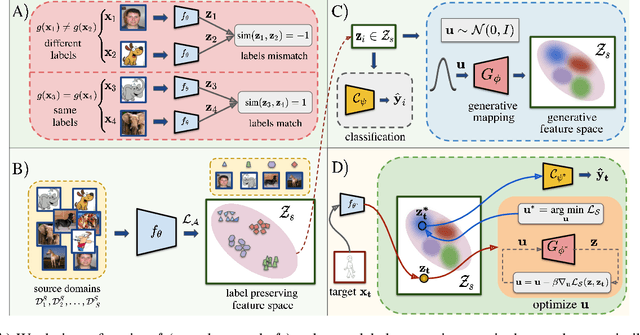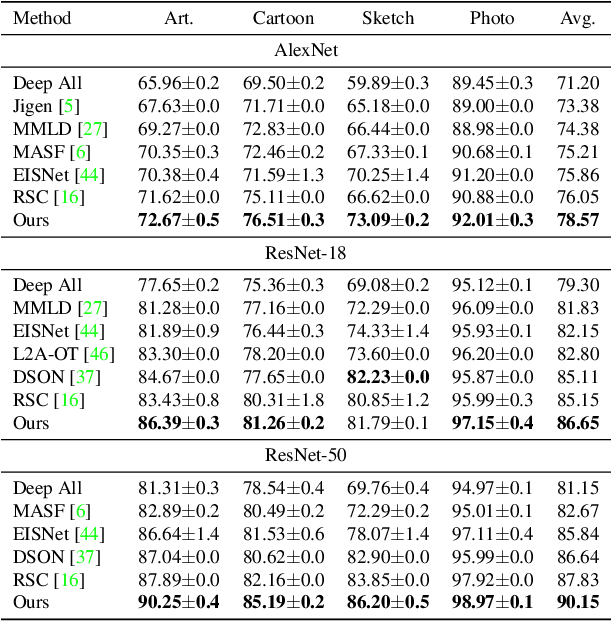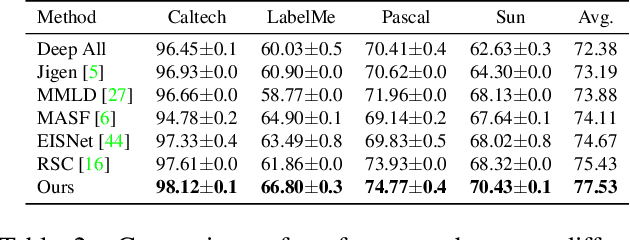Domain Generalization via Inference-time Label-Preserving Target Projections
Paper and Code
Mar 01, 2021



Generalization of machine learning models trained on a set of source domains on unseen target domains with different statistics, is a challenging problem. While many approaches have been proposed to solve this problem, they only utilize source data during training but do not take advantage of the fact that a single target example is available at the time of inference. Motivated by this, we propose a method that effectively uses the target sample during inference beyond mere classification. Our method has three components - (i) A label-preserving feature or metric transformation on source data such that the source samples are clustered in accordance with their class irrespective of their domain (ii) A generative model trained on the these features (iii) A label-preserving projection of the target point on the source-feature manifold during inference via solving an optimization problem on the input space of the generative model using the learned metric. Finally, the projected target is used in the classifier. Since the projected target feature comes from the source manifold and has the same label as the real target by design, the classifier is expected to perform better on it than the true target. We demonstrate that our method outperforms the state-of-the-art Domain Generalization methods on multiple datasets and tasks.
 Add to Chrome
Add to Chrome Add to Firefox
Add to Firefox Add to Edge
Add to Edge